Refractive Errors
In order to better understand how refractive errors affect our vision, it is important to understand how normal vision happens. For people with normal vision, the following sequence takes place:
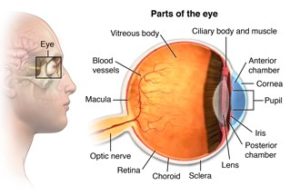
Refractive errors happen when the shape of the eye prevents light from focusing directly on the retina. The following are the most common refractive errors. These errors affect vision and may need corrective lenses or surgery for correction or improvement.

Astigmatism is a condition in which an abnormal curvature of the cornea can cause two focal points to fall in two different locations. This makes objects up close and at a distance appear blurry. Astigmatism may cause eye strain and may be combined with nearsightedness or farsightedness. Eyeglasses, contact lenses, or corrective surgery may help to correct or improve the condition.
Commonly known as farsightedness, hyperopia is the most common refractive error in which an image of a distant object becomes focused behind the retina. This happens either because the eyeball axis is too short, or because the refractive power of the eye is too weak. This condition makes close objects appear out of focus. It may cause headaches and/or eye strain.
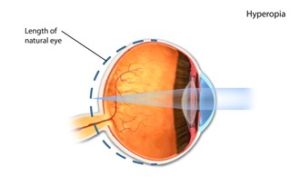
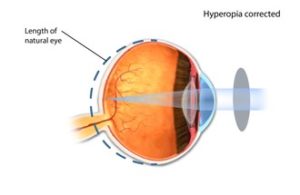
Eyeglasses or contact lenses may help to correct or improve hyperopia by adjusting the focusing power to the retina. Corrective surgery may also help by changing the shape of the cornea to a more spherical, round shape instead of an oval shape.
Commonly known as nearsightedness, myopia is the opposite of hyperopia. It is a condition in which an image of a distant object becomes focused in front the retina. This happens either because the eyeball axis is too long, or because the refractive power of the eye is too strong. This condition makes distant objects appear out of focus and may cause headaches and/or eye strain.
Eyeglasses or contact lenses may help to correct or improve myopia by adjusting the focusing power to the retina. Corrective surgery may also help by changing the shape of the cornea to a more spherical, round shape instead of an oblong shape. Commonly known as nearsightedness, myopia is the opposite of hyperopia. It is a condition in which an image of a distant object becomes focused in front of the retina. This happens either because the eyeball axis is too long, or because the refractive power of the eye is too strong. This condition makes distant objects appear out of focus and may cause headaches and/or eye strain.
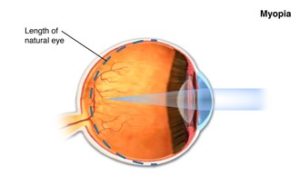
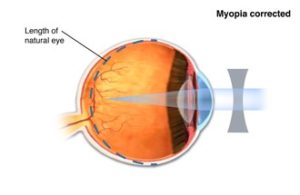
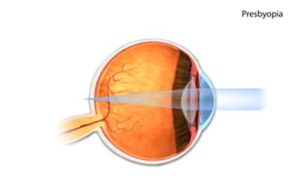
Another type of farsightedness, presbyopia is caused when the center of the eye lens hardens. This makes it unable to accommodate near vision. This condition eventually affects almost everyone, beginning as early as the age of 35. It even affects those with myopia. Eyeglasses or contact lenses may be prescribed to correct or improve the condition.